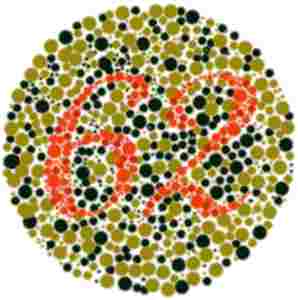

MedFriendly®


Anisochromatic
Anisochromatic means not of one color or not
being the same color throughout. In the field of
medicine, there are many areas where this term
is applicable. One example would be the
description of the appearance of a mole on the
skin. The more anisochromatic a mole is, the
more likely it is to be cancerous. The term is used
to describe the appearance of cells under the
microscope, such as when they are examined by
pathologists. A pathologist is someone who
interprets and diagnoses the changes caused by
disease in tissues and body fluids. An example
would be anisochromatic cancer (tumor) cells.
M.'s test for color vision is anisochromatic.
FEATURED BOOK: Color Vision and Colorimetry
Sometimes, chemical solutions used in medical experiments are also referred to as
anisochromatic (e.g., yellow and green). An example of such a solution would be those
used to test for color-blindness. This includes M.ís test for color vision in which 33 small
bottles filled with different pigments, some with only one color and some with two colors.
The opposite of anisochromatic is isochromatic, meaning of one color. Anisochromatic
comes from the Greek word "an" meaning "not," the Greek word "isos" meaning "equal,"
the Greek word "chroma" meaning "color," and the Greek word "ikos" meaning "pertaining
to." Put the words together and you have "pertaining to not equal color."
"Where Medical Information is Easy to Understand"™















